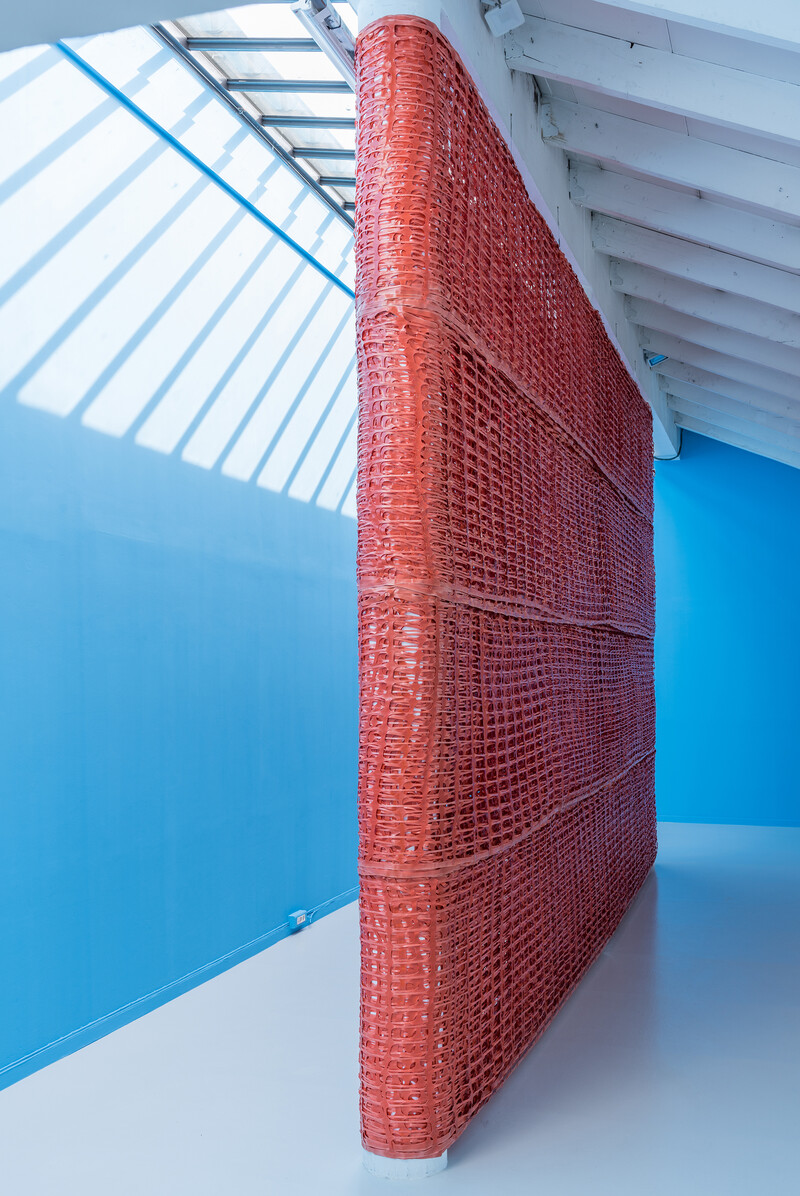
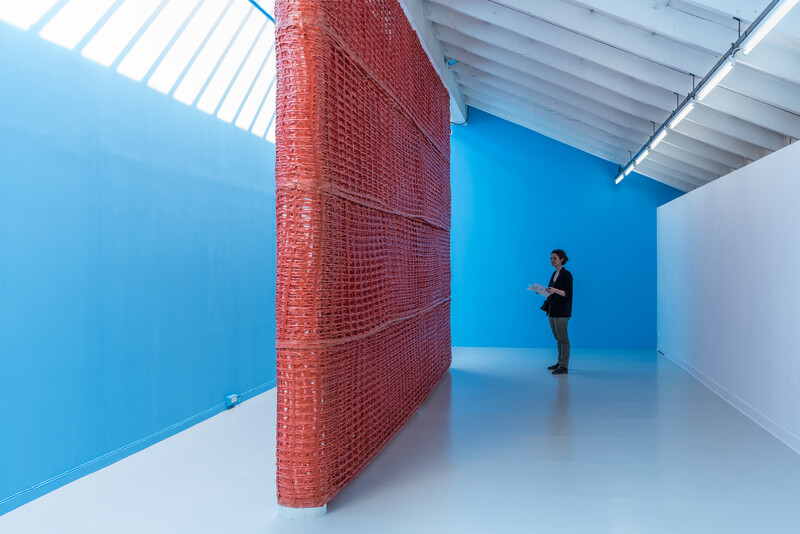
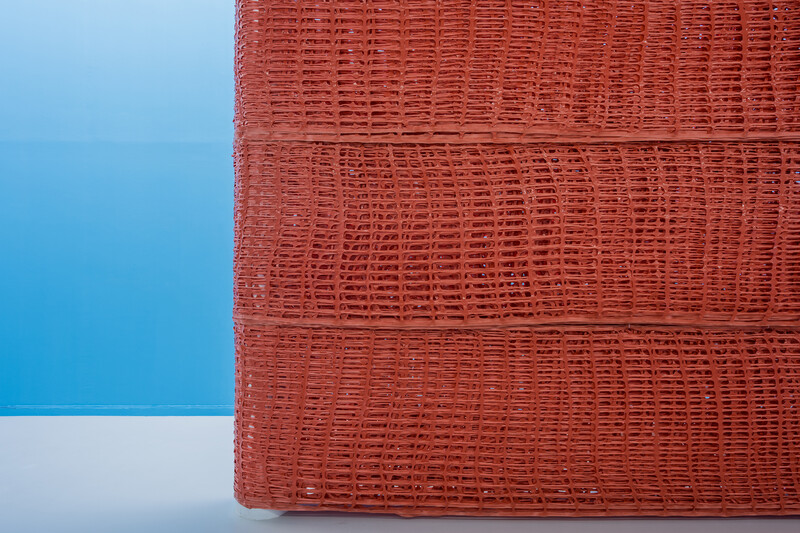
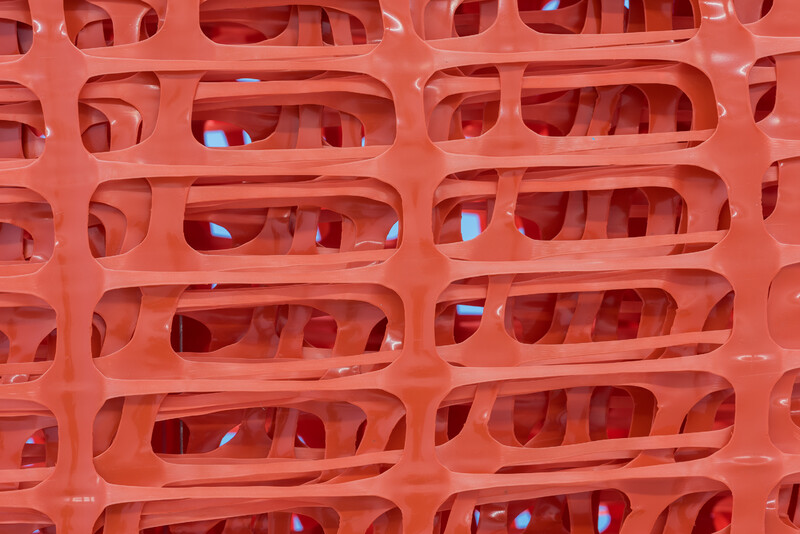
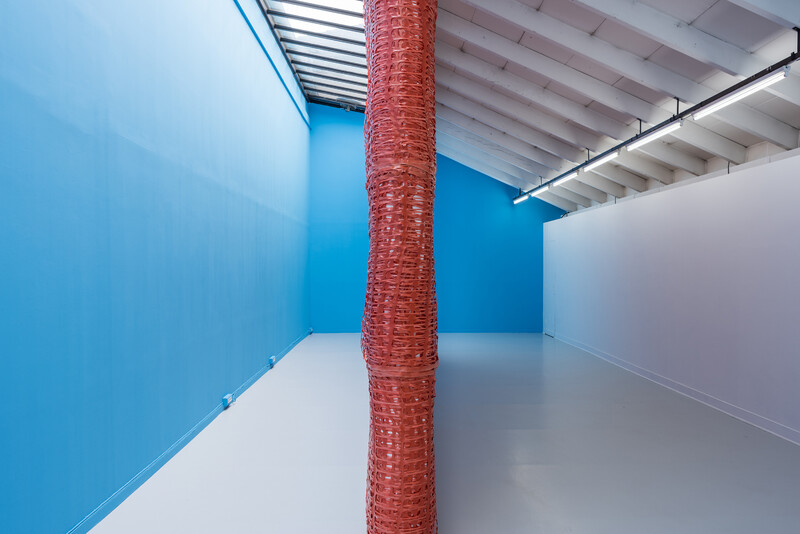
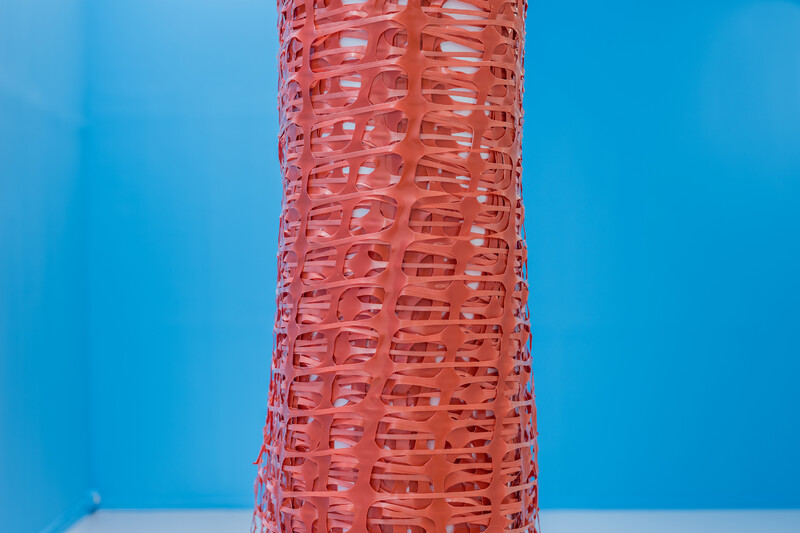
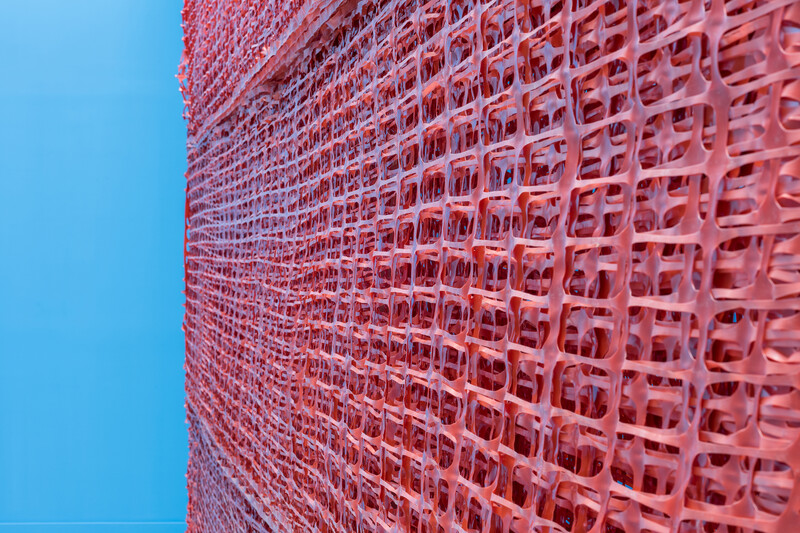
Perimeter of the Prison de la Santé in Orange Plastic Security Fencing (797.35 metres) with Penitentiary Blue Walls
Sheena Hoszko’s new sculptural work considers how prisons, and the carceral web that surrounds them, create groups of people who have been deemed unworthy of care. People of colour, poor people, migrants, and people living with mental illness make up the majority of those in the French penitentiary system. Currently, 71,000 people are incarcerated in French prisons with 10 000 on parole, and an additional 47,000 in migrant detention. France is currently allocating more funding for its 182 prisons, expanding its prison system due to massive overcrowding, and renovating deteriorating facilities. This focus on renovating and expanding prisons reinforces carceral logic. Rather than addressing the reasons why people are criminalized—systemic racism, poverty, global migration due to conflict, and a lack of mental health resources— the state’s focus is on creating "better" living conditions on the inside, including the renovation of Prison de la Santé. In January 2019, Hoszko walked the perimeter of the Prison de la Santé and translated her steps into a distance: 797.35 metres. This distance has been wrapped in orange security fencing around the support columns of one of La Ferme du Buisson’s galleries and its walls have been painted a penitentiary blue. The recontextualization of this site as a sculptural work does not attempt to replicate the feeling of incarceration, but instead functions as a political tool, making visible the limits of care under which state borders and prisons function.

The Blackwood
University of Toronto Mississauga
3359 Mississauga Road
Mississauga, ON L5L 1C6
[email protected]
(905) 828-3789
The galleries are currently open. Hours of operation: Monday–Saturday, 12–5pm.
Facebook | Twitter | Instagram
Sign up to receive our newsletter.
The Blackwood is situated on the Territory of the Mississaugas of the Credit, Seneca, and Huron-Wendat.